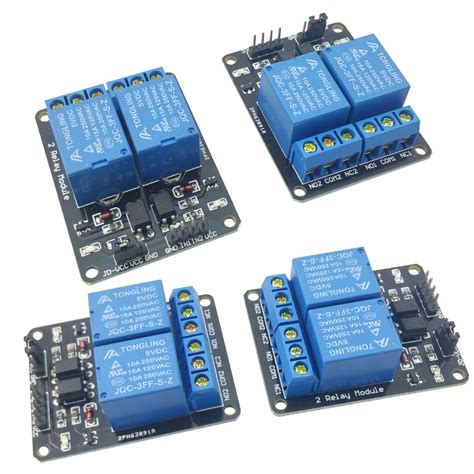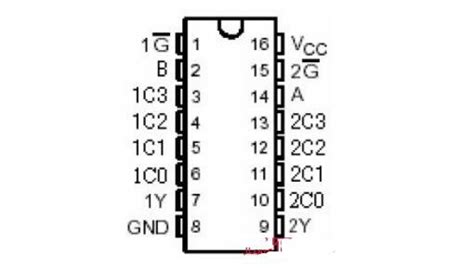
ALL ABOUT FLEX PCB
-
 Read more: Light Sensors – Working Principles, Types, and Application
Read more: Light Sensors – Working Principles, Types, and ApplicationIntroduction to Light Sensors Light sensors are electronic devices that detect and measure the presence, intensity, or wavelength of light. These sensors are essential components in various applications, ranging from consumer electronics to industrial automation systems. Light sensors convert the received light energy into electrical signals, which can be processed […]
-
 Read more: Water Detector Circuit- Working Principle and Basics
Read more: Water Detector Circuit- Working Principle and BasicsWhat is a Water Detector? A water detector is a device that senses the presence of water and triggers an alarm or notification when water is detected. These devices are used in a variety of applications, such as: Flood prevention in basements and low-lying areas Leak detection in plumbing systems […]
-
8 Channel Relay: Everything You Need to Know
Posted by
–
 Read more: 8 Channel Relay: Everything You Need to Know
Read more: 8 Channel Relay: Everything You Need to KnowRelay Essentials What is a Relay? A relay is an electrically operated switch that uses an electromagnet to mechanically operate a switch. It allows a low-power signal to control a high-power circuit, providing isolation and amplification. Relays are widely used in various applications, such as automotive systems, industrial control, home […]
-
 Read more: Phone Circuit: The Basic Components and How It Works
Read more: Phone Circuit: The Basic Components and How It WorksIntroduction to Phone Circuits A phone circuit refers to the electrical and electronic components that make up the internal circuitry of a telephone. This circuit enables the transmission and reception of voice signals over a telephone network. Understanding the basic components and workings of a phone circuit is essential for […]
-
74hc00 Pinout: Where And How to Use It
Posted by
–
 Read more: 74hc00 Pinout: Where And How to Use It
Read more: 74hc00 Pinout: Where And How to Use ItWhat is the 74HC00? The 74HC00 is a quad 2-input NAND gate IC, meaning it contains four independent NAND gates within a single package. NAND gates are universal logic gates that can be used to create any other type of logic gate, making them highly versatile in digital circuit design. […]
-
SMT Assembly capabilities
Posted by
–
 Read more: SMT Assembly capabilities
Read more: SMT Assembly capabilitiesWhat is SMT Assembly? Surface-mount technology (SMT) is a method for producing electronic circuits in which the components are mounted directly onto the surface of printed circuit boards (PCBs). An electronic device so made is called a surface-mount device (SMD). In industry, this approach has largely replaced the through-hole technology […]
-
Guide to the Rayming PCB Calculator – calculate prices, get quotations, analyse your data
Posted by
–
 Read more: Guide to the Rayming PCB Calculator – calculate prices, get quotations, analyse your data
Read more: Guide to the Rayming PCB Calculator – calculate prices, get quotations, analyse your dataWhat is the Rayming PCB Calculator? The Rayming PCB Calculator is an online tool that allows you to quickly and easily calculate the cost of manufacturing printed circuit boards (PCBs). It provides instant quotations based on your PCB specifications, helping you budget your projects effectively. The calculator also offers data […]
-
 Read more: Lead-free solder vs. Lead solder: A Comprehensive Guide You Should Know
Read more: Lead-free solder vs. Lead solder: A Comprehensive Guide You Should KnowIntroduction: The Importance of Choosing the Right Solder Soldering is a crucial process in the world of electronics, as it allows for the connection and assembly of various components on printed circuit boards (PCBs). The choice between lead-free and lead solder can significantly impact the quality, durability, and environmental impact […]
-
Transistors MESFET: Everything you need to know
Posted by
–
 Read more: Transistors MESFET: Everything you need to know
Read more: Transistors MESFET: Everything you need to knowIntroduction to MESFET Transistors Metal-Semiconductor Field Effect Transistors, or MESFETs, are a type of field-effect transistor (FET) that are commonly used in high-frequency applications, such as radio frequency (RF) and microwave circuits. They are known for their high power efficiency, low noise, and high gain at high frequencies. In this […]
-
Resistor Color Codes: A Brief Overview
Posted by
–
 Read more: Resistor Color Codes: A Brief Overview
Read more: Resistor Color Codes: A Brief OverviewWhat are Resistor Color Codes? Resistor color codes are a standardized system used to indicate the resistance value and tolerance of a resistor. The system consists of colored bands printed on the resistor body, with each color representing a specific number or multiplier. By reading these color codes in the […]




